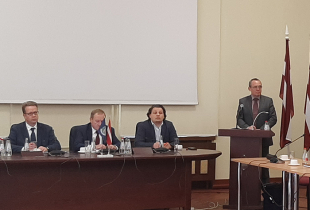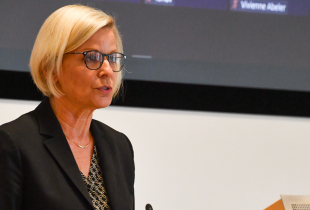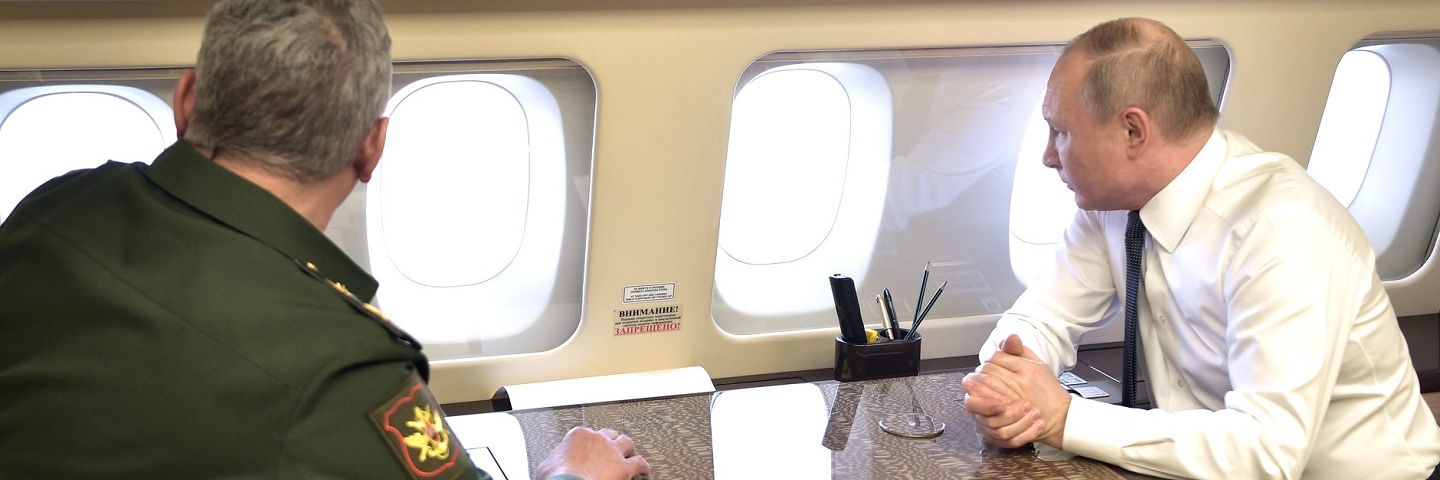
Continuity in Russian Strategic Culture: A Case Study of Moscow’s Syrian Campaign
Executive Summary
- The paper argues that Russian strategic-operational conduct in Syria demonstrates more continuity than change in the traditional Russian approach to military operations and strategy.
- The paper claims that this continuity presents itself in the following cultural traits: (1) a holistic approach to strategy and operations; (2) recklessness and disconnect between words and deeds; (3) a mix of messianic–pragmatic considerations; (4) an integral strategic management style; and (5) operational creativeness.
- The paper also suggests that change might be evolving on the tactical-operational level with the emergence of a mission command culture.
Introduction
In this paper, we explore the extent to which Moscow’s modus operandi during the military campaign in Syria demonstrates continuity in Russian strategic culture. Moscow’s intensive and years-long Syria campaign makes it possible to categorize Russian strategic behavior and to compare and contrast it with the conventional wisdom about Russian strategic culture and traits of operational behavior. Illustrating the cultural drivers behind Russian policy and operations in Syria, this paper adds an additional layer to the existing knowledge about Moscow’s conduct in the Middle East, and about ideational factors that shape Moscow’s strategic behavior elsewhere. This expands the toolbox for policy experts contemplating diagnosis and prognosis of Russian geostrategic assertiveness in the region and beyond.
The paper distills five main characteristics of Russian strategic-operational conduct in Syria. We claim that the Russian operation in Syrian demonstrated (1) a holistic approach to strategy and operations, (2) recklessness and disconnect between words and deeds, (3) a mix of messianic–pragmatic considerations, (4) an “integral” management style, and (5) operational creativeness. We argue that these traits demonstrate more continuity than change in the traditional Russian approach to military operations and strategy. However, we also suggest that change might be evolving on the tactical-operational level with the emergence of a mission command culture.
Following this introduction, the paper is divided into five sections. Each section describes a specific characteristic of Moscow’s Syria campaign and shows how it corresponds with or deviates from earlier Russian strategic tradition. The conclusion summarizes the findings and outlines the implications for policymakers.
Holistic Approach
Russian conduct in Syria exemplified the so-called holistic or systemic approach to strategy, dubbed in Russian as kompleksnyi or sistemnyi podhod. This applies to both the political-strategic and the operational-tactical aspects of the Syria campaign. A holistic or systemic approach stands for an all-embracing view that “grasps a big picture and describes every element of reality as being in constant interplay with others in frames of a meta-system. It views issues in different dimensions as interconnected within one generalized frame.”1 A predilection for holism is prominent throughout Russian intellectual tradition and cognitive style in literature, religious philosophy, and the sciences.2 It has also been projected on the culture of war, strategic style, and military thought.3
There are three examples that illustrate the continuity of this holistic trait in the Russian Syrian campaign. First, the goals of the intervention reflect the holistic nature of the Russian approach on the strategic-political level. The campaign has promoted, in parallel, several interconnected global, regional, domestic, and organizational logics (sistemo-obrazuischiaia logika), which have shaped the essence of Russian conduct.4
Second, the campaign design on the military-operational level was equally holistic or systemic. The holistic-thinking tradition envisions war as a clash of two competing systems. Within such a paradigm, operational design does not aim at the annihilation of the enemy by methodical destruction of its forces, but seeks its dismantlement and disintegration through fragmentation strikes (drobiaschii/raschleniaiuschii udar), decomposition (razlozhenie), systemic paralysis, and neutralization.5 The Russian campaign design and its operational execution demonstrated exactly that. Moscow sought to mount not just a large-scale operation, but a comprehensive one that would reverse strategic trends, deny the initiative to the anti-Syrian government forces, demonstrate the strength of the regime, fragment the opposition forces with their subsequent localization and neutralization, and facilitate conditions for a political process by convincing the main actors and their proxies of the futility of further fighting. The air campaign took the form of strikes on the systems that hold opposition forces together: the command and control (C2) systems, material supply chains, and economic centers of gravity. In conjunction with the air strikes, ground operations sought first to control the main transportation infrastructure; lift the blockade of encircled cities and garrisons of the Syrian army; and then localize, isolate, and dismantle pockets of resistance while, in parallel, systematically destroying hardware and fighters all over the country from the air.6
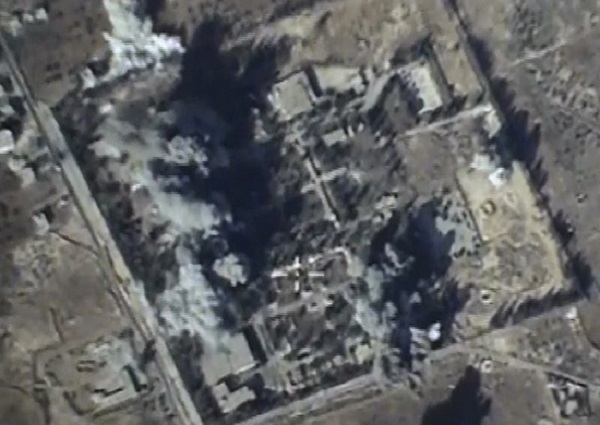
Finally, contemporary Russian military-strategic thought, which informed the campaign’s design, illustrates holistic threat perception and a holistic conceptualization of the countermeasures. Combining hard and soft instruments of power across military and nonmilitary domains—which is so evident in the current Russian approach to strategy—is a manifestation of the same systemic tradition. Asymmetry, which has also been part of this paradigm, can also be seen as a manifestation of strategic holism.7 In sum, the holistic approach demonstrates a clear continuity of the strategic tradition.
Recklessness and Disconnect Between Theory and Practice
Russian strategic tradition often manifests a disconnect between the words of theoreticians and the deeds of the practitioners implementing them. Military and nonmilitary theoreticians can be very advanced in their conceptualizations, but the system, as a whole, can be pathologically bad at implementing them. This trait, the other side of the holistic coin, has manifested itself throughout Russian history.8 The gap between the theoretical and the feasible, however, has never stopped Russian decision-makers. Russian and Soviet military thinking has been future-oriented and could be described as wishful thinking that ignores current realities and neglects problems. The Soviets were traditionally good at theorizing innovative concepts, but often limited themselves to abstract considerations and remained prisoners of their futuristic visions; sophisticated doctrines were incompatible with the country’s operational capacity to implement them.9 Frequently, an accompanying cultural trait has been an inclination to stage events for show (pokazukha) and efforts to appear rather than to be. Thus, despite leaders’ holistic approaches to strategic theory and operational planning, in reality we often observe systemic breakdowns (sistemnii sboi) on the operational level. This could be due to what various authors perceive as traditional Russian recklessness (razgildiastvo) and carelessness (bezolarabenrnost’), resulting in an overall mess and chaos (bardak) in both planning and execution.10
Russian conduct in Syria could be attributed to these traits. Unquestionably, the limited order of battle sustained a very high rate of bombing sorties and combat missions with a historically low number of combat losses—both in personnel and in platforms—and of mechanical accidents, unparalleled in comparison with all previous Russian combat experiences.11 However, the longer the campaign, the more accidents, combat and noncombat casualties, and systemic breakdowns occurred. Despite announcements of victory and the withdrawal of forces, the promotion of the victory narrative, and the conduct of victory parades, the political process has been moving more slowly than expected. Presumably, the episodes—at Dir-a-Zor in February 2018, when Russian mercenaries initiated an attack and were eventually destroyed by U.S. fire strikes; and in September 2018, when Syrian Air Defense forces shot down a Russian signals intelligence (ELINT) plane—illustrate the phenomenon of the abovementioned bardak. Apparently, the Syrian campaign exhibited less recklessness and bardak than was reported during the Soviet operations in Afghanistan, the Russian operations in Chechnya and in Georgia in 2008, and even less than in the 2014 war in Ukraine, but eventually, there were still more of these traits displayed in the aforementioned 2018 episodes than at the beginning of the operation. Thus, overall, despite relative improvements, this general cultural trait remained intact.
A Mix of Pragmatic and Messianic Considerations
Messianism has long been a tradition in Russian foreign policy.12 It emanates from a religious-political-public conviction about the predestination of Russia in the world. Informed by the religious philosophy of the Holy Rus’ and Third Rome which defines Russia and its people as a God chosen country and nation, this concept places Russia at the spiritual center responsible for the salvation of Christian civilization and of the world.13 The balance between pragmatism and messianism in the Tsarist and Soviet regional policies varied, but it was always a synthesis of both considerations. The tide of religious metaphysics as a driver of political considerations has ebbed and flowed over history, with varying impact on policy.14 Messianic considerations and self-attribution of the civilizational mission were always traits in Russian strategic mentality and national narrative and have varied in intensity according to the centrality to the leadership. The Arab Spring coincided with an increase in the roles of religion and messianism in Russian ideology and politics.15
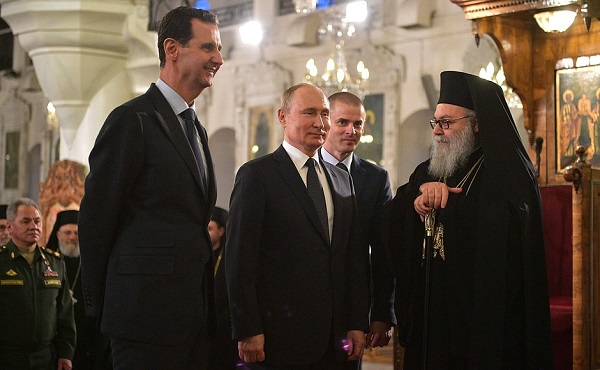
The Syrian campaign has been the Russian diplomatic-military enterprise most significantly touched by religion in the post-Soviet era. During the operation, the ecclesiastical diplomacy (1) provided the Kremlin with a messianic raison d’être, enabling the leadership to justify the mission in their own eyes and operate from a position of moral-psychological comfort; (2) engaged foreign political leaders, international organizations, and the main Christian denominations worldwide to legitimize Moscow’s policy, mainly focusing on the EU and the United States; and (3) sustained domestic support for the operation and maintained combat effectiveness within the Russian military on the ground, which multiplied motivation, morale, and unit cohesion. Thus, the operation has been a clear extension of the messianic imprint on strategy, which expressed itself during the Tsarist and Soviet eras.16
Integral Management Style
The Syrian operation demonstrated rapid decision-making and decision execution and a flexible approach to strategy, which owed a lot to the notion of “integral strategist” (ingtegral’nii polkovodets) and the C2 architecture supporting it that ensures uninterrupted political control over war. The Russian notion of integral strategist refers to the highest strategic authority, which ties together, at the national level all types of considerations (political, economic, ideological) and forms of power (military and civilian, private and public) into a single integrated effort. It can be translated as “grand strategist,” one who operates within the Stavka, or wartime supreme command. In different historical periods it has taken different shapes and forms, but the logic stays the same. Integration of military and nonmilitary sources of power is an old Russian managerial tradition, codified in both Soviet and post-Soviet times and supported by theoretical writings, mostly works by the Soviet military theoretician Svechin that have become somewhat popular within the Russian supreme command today.17
One of the main desired outcomes of integral management style, at least in theory, is uninterrupted political control over the military operation from the grand strategic level to the tactical level. This leads to a calibrated use of force, ensuring the utility of violence. This “intervention” of the political authority in military affairs, and the familiarity of the military with grand strategic considerations, enable productive discourse within the strategic community, especially during uncertain and unstable situations that demand what Svechin called a “flexible plan of war” (gibkii plan voiny).18 The notion is epitomized by the unique three-echelon C2 architecture that exists in Syria—from the National Defense Management Center (NDMC) in the General Staff (GS), the highest level of command, via the command post in Khmeimim; to the C2 centers giving the operational directions in the field, the lowest level of command. The NDMC—as part of the GS, but reporting directly to the Ministry of Defense (MoD)—tailored the processes from the strategic to the tactical level, and coordinated staff work on the combat, diplomatic, and humanitarian activities, synchronizing them with other armed segments of the coalition.19
Moreover, the NDMC configuration, even if it is only a ritualistic façade, illustrates the canonic role of the GS—the brain of the military and meta-operator of war—in direct continuity with the Russian strategic tradition, when the GS functions as the main staff organ supporting the decision-making process of the supreme command. The location and roles of the NDMC as part of the GS reflect the intentional organizational design based, among other, on the lessons learned from the Great Patriotic War (GPW) about strategic management architecture and its implementation.20
Operational Creativity
The main professional quality of a commander, according to Russian military thought, is operational creativity (operativnoe tvorchestvo), which stands for the art of designing, planning, and executing operations. It is an art and not a science, and thus relies on critical thinking, flexibility, and ingenuity. The ability of the Russian military to employ these virtues in its leaders has varied over history. There is an inherent tension between the notion of operational creativity, which implies a certain delegation of authority, and the concept of the integral strategist, which implies centralization. However, over the centuries, the Russian strategic tradition has adjusted to manage this tension well. Not surprisingly, the concept of operational art and the operational level of war have been the product of Soviet military thought and only later have been further elaborated by Western strategists.21 In Syria, Moscow has demonstrated an aptitude for adaptation and improvisation that might seem unorthodox for the Russian military. However, what might appear to be a novelty reflects the notion of operational creativity—an old trait in the Russian military tradition.
The Russian modus operandi had been more similar to the Israeli approach, which can be described as “learning by friction” in situations of uncertainty and instability. The Syria campaign illustrated the flexible Russian approach to strategy and operations. Moscow acted through trial and error, experimented and failed quickly and cheaply, and modified the main direction of its strikes (napravlenie glavnogo udara) in response to dynamic developments across the vectors of operation.22 Delegation of a certain level of authority to the theater-level commander, as occurred in Syria, well illustrated the notion and tradition of operational creativity in the Soviet and Russian military. The fact that a two-star general commands a grouping of forces in Syria implies a certain level of decision-making autonomy on the ground, without strict coordination with Moscow.
The Russian political-military leadership has also demonstrated adaptive learning, driven by this virtue of operational art. Specifically, Russia never waged coalition warfare and has been culturally averse to this type of conduct, traditionally striving to be self-reliant and self-sufficient in military affairs. Fighting in a coalition was, indeed, unprecedented and ran counter to the traditional Russian inclination to be strategically self-sufficient. However, once Moscow began fighting in a coalition, its operational behavior was consistent with other traits of the Russian managerial tradition. Thus, on the strategic-operational level of war, the continuity probably remains intact. In parallel to this continuity, a departure from strategic tradition might have emerged on the tactical level. The chief of the GS has underscored the importance of the cultivation of commanders’ qualities, which are exactly the skills needed for employing mission command. If declarations of intent of the Russian military leadership reflect anything, then we might be looking at the first signs of evolvement of a mission-command culture in the Russian military.23
Conclusion
We have explored the extent to which Moscow’s modus operandi during the military campaign in Syria demonstrates change or continuity in Russian strategic culture. We argued that Russian conduct illustrates overall steadiness in the Russian style of war and military thought. The campaign demonstrated such traditional traits as a holistic approach to strategy and military operations; certain degrees of recklessness, disconnect between theory and practice, and an inclination to stage events for show; a mix of pragmatic and messianic considerations behind the campaign design; integral management style; and the professional military virtue of operational creativity.
Thus, the analysis has supported the basic theoretical proposition that the strategic behavior of a given actor is more likely to demonstrate continuity in the culture of war and military tradition, rather than a departure from earlier traits. However, the paper has also hypothesized that a possible novelty might be emerging on the tactical-operational level of Russian conduct. Indications suggest that, in contrast to the previous tradition of centralized command, more planning, decision-making, and execution authority might be delegated to the lower level of command—meaning that a mission- command culture might be emerging within the Russian military. If this practice materializes, it will be a major departure from the Russian military tradition. As of this writing, the expert community has competing views on such an eventuality. The discussion of Moscow’s Syria campaign presented in this paper suggests that analysis through the lens of strategic culture theory can significantly contribute to understanding of the current version of Russian strategic behavior in the Middle East and beyond. This framework of analysis does not unconditionally predict Moscow’s prospective conduct. However, it does offer theoreticians and practitioners of international affairs a systematic and thorough way to hypothesize and designate certain trends as more likely than others.
For Academic Citation
Dmitry (Dima) Adamsky, “Continuity in Russian Strategic Culture: A Case Study of Moscow’s Syrian Campaign,” Marshall Center Security Insight, no. 48 (Febuary 2020):
https://www.marshallcenter.org/en/publications/security-insights/continuity-russian-strategic-culture-case-study-moscows-syrian-campaign-0.
Notes
1 Dmitry (Dima) Adamsky, Moscow’s Syria Campaign (Paris: IFRI, 2018).
2 Isaiah Berlin, The Soviet Mind, Washington, D.C.: Brookings Institution, 2011; Loran R. Graham, Science in Russia and the Former Soviet Union: A Short History (Cambridge, UK: Cambridge University Press, 1993); Loran R. Graham, Science, Philosophy and Human Behavior in the Soviet Union (New York, N.Y.: Columbia University Press, 1987); Lev Gumilevskii, Russkie Inzhinery (Moscow: Molodaia Gvardiia, 1953); V. F. Shapavolov, Istoki I Smysl Rossiiskoi Tsivilizatsii (Moscow: Fair Press, 2003); V. Solov’ev, Natsional’nyi Vopros v Rossii (Moscow: AST, 1988).
3 Shimon Naveh, In Pursuit of Military Excellence (London: Routledge, 1997); Nathan Constantin Leites, The Operational Code of the Politburo, (Santa Monica: RAND Corporation, CB-104-1, 1951); Robert Bathurst, Intelligence and the Mirror (New York: Sage 1993); Christopher Donnelly, Red Banner (London: Jane’s Group, 1988).
4 Kofman and Rojansky, “What Kind of Victory for Russia in Syria?” Military Review, January 2018; Adamsky, 2018.
5 Naveh, 1997.
6 Adamsky, 2018; Kofman and Rojansky, 2018.
7 V. Gerasimov, “Tsennost’ nauki v predvidenii,” VPK, 27 February 2013; V. Gerasimov, “Mir na graniakh voiny,” VPK, 15 March 2017; V. Gerasimov, “Organizatsii oborony RF v usloviiakh primenenia protivnikom gibridnykh metodov,” Vestnik AVN, Vol. 55, No. 2, 2016; V. Gerasimov, “Vektory razvitiia voennoi strategii,” Krasnaia Zvezda (KZ), March 4, 2019; A. Kartapolov, “Priamye I nepriamye desitviia v sovremennykh mezhdunarodnykh konfliktakh,” Vestnik AVN, Vol. 51, No. 2, 2015; I. Sergun, “Vzgliady rukovodstva veduschikh inostrannykh gosudrastv I NATO na primenenie VS v sovremennykh konfliktakh,” Vestnik AVN, Vol. 51, No. 2, 2015.
8 Leites, 1951, p. 30; Dima Adamsky, The Culture of Military Innovation (Palo Alto: Stanford University Press, 2010).
9 For example, see Graham, 1987, 1993; Donnelly, 1988; Bathurst, 1998; Vadim Kozhinov, O russkom nacional’nom soznanii (Moscow: Algoritm, 2002); Mikhail Epstein, Na granitzakh kultur (New York: Slovo, 1995); Nathan Leites, Soviet Style in Management (New York: Crane Russak, 1985); A. Kokoshin, Inovatsionnye vooruzhennye sily (Moscow: URSS, 2009).
10 For example, see: Vladimir Denisov, “”My podarili protivniku preimuschestvo v 15 let,” Novaya Gazeta, December 3 2018; Pavel Baev, “Russia Absent from North Korean Crisis,” EDM, April 24, 2017. For the “endemic bardak” in the Russian planning system, see Roger McDermott, “The Brain of the Russian Army: Futuristic Visions Tethered by the Past,” Journal of Slavic Military Studies, Vol. 27, 2014.
11 For example, see Anton Lavrov, Russian Military Reforms from Georgia to Syria, (Washington: Center for Strategic and International Studies, 2018); Kofman and Rojansky, 2018; Adamsky (IFRI, 2018); McDermott, 2014; The National Interest, “The War in Syria Has Been a Boon for the Russian Military,” The National Interest, November 8, 2018.
12 Aleksei Vasiliev, Rossiia na Blizhnem I Sredenm Vostoke: Ot Messianstva k Pragmatizmy (Moscow: Nauka, 1993); Robert Donaldson and Joseph Nogee, The Foreign Policy of Russia (London: Routledge, 2014), pp.30–34, 116–119.
13 Anna Geifman, “Putin’s Sacred Mission in Syria,” BESA Center Paper No. 335, March 27, 2016; Alicija Curanovic, “Russia’s Mission in the World.” Problems of Post-Communism 20:253–267, 2019; Irina Papkova, The Orthodox Church and Russian Politics (New York: Oxford University Press., 2011); Charles Clover, Black Wind, White Snow (New Haven: Yale University Press, 2016).
14 Dmitry Trenin, The Mythical Alliance (Moscow: Carnegie Moscow Center, 2018); Kier Giles, Moscow Rules (London: RUSI, 2018), part 3, chapter 7; Issaev and Yuriev, p. 2.
15 Maria Engström, “Contemporary Russian Messianism,” Contemporary Security Policy, Vol. 35, No. 3, 2014.
16 Dmitry Adamsky, Russian Nuclear Orthodoxy (Stanford: Stanford University Press, 2019).
17 Kh. Saifetdinov, “A.A. Svechin – Vydaiuschiisia Voennyi Myslitel’ nachiala XX veka,” VM, No. 8, 2018; A. Kokoshin, V. Veselov, A. Liss, and I. Fisenko, Sovremennye Voiny I Voennoe Iskusstvo (Moscow: URSS, 2015), pp. 44–45.
18 Ibid.
19 S. Rudskoj, “Osnovnye ètapy оperatsii VS RF v SAR i оsobennosti оrganizatsii sistemy upravleniia,” Arsenal Otechestva, Vol. 31, No. 5, 2017; V. Baranets, “Nachal’nik GS VS Rossii Valerij Gerasimov: My perelomili khrebet udarnym silam terrorisma,” Komsomol’skaia Pravda, December 26, 2017.
20 V. Gerasimov, “Opyt strategicheskogo rukovodstva v VOV I organizatsia edinogo upravleniia oboronoi strany v sovremennykh usloviiakh,” Vestnik AVN, Vol. 51, No. 2, 2015.
21 Martin Van Creveld and John Andreas Olsen, The Evolution of Operational Art (Oxford: Oxford University Press, 2010).
22 A. Vdovin, “Adaptivnyi podkhod k primeneniiu sil I sredstv dlia bor’by s terroristami,” VM, No. 5, 2018; Kartapolov, 2015; Kofman and Rojansky, 2018; Adamsky, 2018.
23 General Gerasimov: Siriiskij opyt—bestsennaia shkola dlia rossiiskikh voisk,” Polit Rossiia, February 5, 2017; “V Voennoi akademii GSh VS RF proshlo ocherednoe zaniatie kursa ‘Armiia I Obshchestvo,’” MO RF, February 3, 2017; “Vystuplenie nachal'nika GS VS RF na zasedanii Kolegii Minoborony,” MO RF, November 7, 2017; L. Khairemdinov, “Siriiskij opyt kak osnova,” KZ, July 18, 2017.
About the Author
Dmitry (Dima) Adamsky is a professor at the School of Government, Diplomacy and Strategy at the IDC Herzliya University, Israel. His research interests include international security; cultural approaches to international relations; and American, Russian, and Israeli national security policy. He has published on these topics in Foreign Affairs, Security Studies, Journal of Strategic Studies, Problems of Post-Communism, Intelligence and National Security, Studies in Conflict and Terrorism, and Cold War History. He is the author of Operation Kavkaz (2006), The Culture of Military Innovation (Stanford University Press, 2010), and, with Kjell Inge Bjerga, Contemporary Military Innovation (Routledge, 2013). His latest book, Russian Nuclear Orthodoxy (Stanford University Press, 2019), is about religion, politics, and strategy in Russia. This paper is based on Dmitry (Dima) Adamsky, “Russian Campaign in Syria—Change and Continuity in Strategic Culture,” Journal of Strategic Studies, Vol. 43, No. 2, 2020, pp.104–125.
Russia Strategic Initiative
Russia Strategic Initiative (RSI): This program of research, led by the GCMC and funded by RSI (U.S. Department of Defense effort to enhance understanding of the Russian way of war in order to inform strategy and planning), employs in-depth case studies to better understand Russian strategic behavior in order to mitigate miscalculation in relations.
The Marshall Center Security Insights
The George C. Marshall European Center for Security Studies in Garmisch-Partenkirchen, Germany, a German-American partnership, is committed to creating and enhancing worldwide networks to address global and regional security challenges. The Marshall Center offers fifteen resident programs designed to promote peaceful, whole of government approaches to address today’s most pressing security challenges. Since its creation in 1992, the Marshall Center’s alumni network has grown to include over 13,985 professionals from 157 countries. More information on the Marshall Center can be found online at www.marshallcenter.org.
The articles in the Security Insights series reflect the views of the authors and are not necessarily the official policy of the United States, Germany, or any other governments.
